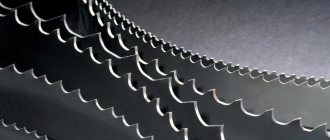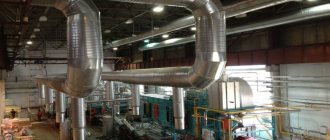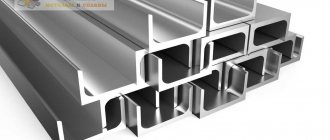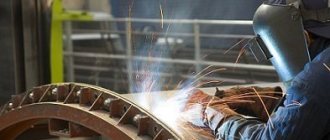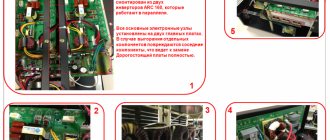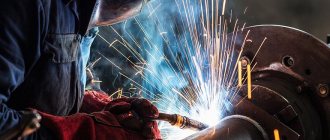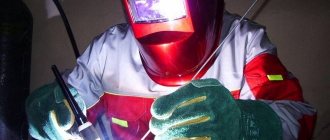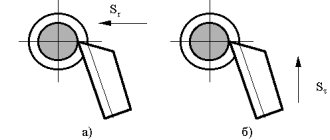Any welding shop is a complex facility. To organize it, you will have to coordinate with the fire department and the sanitary and epidemiological station, because first of all, energy will be present here in pure open form, and this is electricity or fire from a gas burner.
Secondly, for the same reasons, there will be difficult working conditions here. Therefore, it is very important to study the rules of workshop organization and strictly observe them during the entire life of the welding area.
Brief description of the concept
When organizing a private welding shop, an entrepreneur may be tempted to refuse to officially register his endeavor. However, registering as an individual entrepreneur will allow you to open up new horizons for the development of your business that were previously unavailable. Moreover, the choice of the optimal taxation system will minimize the amount of tax contributions that must be paid to the state treasury. In this case, the simplified tax system with a tax rate of 6% of the amount of “dirty” income is suitable. No additional licenses or permits will be required.
As for choosing the required OKVED codes, everything is extremely simple:
- 25.6 “Metal processing and coating of metals; mechanical processing of metals";
- 25.62 “Mechanical processing of metal products.”
An example of a list of services of a private welding shop is presented below:
- Welding of household and household items.
- Automotive welding works.
- Welding pipes of various diameters.
- Welding of gratings and metal fences.
- Welding of decorative products.
If the business operates successfully and generates a stable profit, then the list of services can subsequently be expanded or even new areas of work can be opened.
Premises requirements
In addition to all the requirements described above, which mainly relate to safety, there are additional rules and regulations. One of the main ones is the strength and hardness of the floor in the welding shop. It should be finished with non-slip, fire-resistant material.
Each welder must have his own workplace with an area of at least 2 m2. Two welders are prohibited from working in it.
Although if the welding shop is small, then the workbench can be divided into two people with one condition - a partition made of non-flammable material must be installed between the welders. It is usually made from sheet metal.
The color finish of the welding shop is very important, especially when processes are carried out using electric welding. Glare and glare can disturb workers. The main color is yellow, white or gray. As for paint, it is better to use zinc or titanium white.
How much do you need to invest in opening?
As already noted, the start-up costs for organizing a welding shop will amount to 300 thousand rubles. Now let’s decide where we will have to spend this amount.
| Expense item | Amount of costs, rub. |
| Rent of production premises (payment for the first 6 months) | 60 000 |
| Preparing the workshop for work, including necessary repairs and checking communications | 70 000 |
| Equipping the welding shop with equipment and consumables | 150 000 |
| Costs for registration and paperwork | 5 000 |
| Marketing and promotion | 10 000 |
| Other types of expenses | 5 000 |
| TOTAL | 300 000 |
The table clearly shows that the equipment for the welding shop will “eat up” exactly half of the initial capital. Its cost, of course, may be lower, but then the quality will also not be at the proper level. So saving on this expense item is highly not recommended.
Marketing plan
The business of opening a private welding shop does not require drawing up a serious marketing plan. In any case, the main and most effective tool for promoting a business will be word of mouth. Among other types of advertising, it is worth highlighting advertisements for the provision of welding services in the printed press, as well as several types of outdoor advertising with a brief description of the services. You can also agree with local enterprises producing metal structures on mutually beneficial cooperation and joint advertising.
Monthly income from welding work will be about 300 thousand rubles, provided that the maximum possible range of services is provided. For example, welding pipes and decorative structures is very profitable. The level of income will directly depend on the professionalism of the welders. According to the calculations in this business plan, the annual income from the operation of a welding shop in a city with a population of up to 300 thousand people will be 3.6 million rubles.
welding process
includes :
- sequence of technological operations;
- breakdown of the structure into individual technological units or elements;
- preliminary design of special devices and equipment;
- calculations of the modes of basic welding processes, calculations of expected welding stresses and deformations;
- comparative assessment of developed technology options.
After the final approval of the technical design and the accepted technology option, detailed design of the structure (drawing up design documentation) and development of working technology (drawing up technological documentation) are carried out.
The working welding process includes:
- clarifications and changes in the fundamental technological process associated with design changes at the detailed design stage;
- development of technological maps, which indicate all the parameters of the welding mode, the welding materials and equipment used;
- brief descriptions of technological methods for performing individual welding operations;
- requirements for the strength and quality of welded structures at individual stages of their manufacture;
- instructions on methods for checking the accuracy and quality control of connections, assemblies and finished structures.
Depending on the number of products covered by the process, two types of technological process have been established: standard and single. The rules for the development of working technological processes provide for the mandatory use of standard technological processes and standards for technological operations.
Depending on the degree of detail, each welding process can be route, operational or operational-route. Standard technological processes are developed based on an analysis of many existing and possible technological processes for typical representatives of product groups. A technological operation is part of a technological process, carried out at one workplace.
Welding process: development of a standard welding process
The main stages of development of a standard technological process include:
1) classification of production objects - select groups of objects that have common design and technological characteristics, and typical representatives of the groups;
2) quantitative assessment of groups of objects - assessment of the type of production (single, serial or mass);
3) analysis of the designs of standard objects according to drawings, technical specifications (TS), production programs and type of production; develop the main routes for the manufacture of structures, including procurement processes;
4) selection of a workpiece and methods of its manufacture with a technical and economic assessment, assessing the accuracy characteristics of manufacturing methods and surface quality, choosing a processing method;
5) selection of technological bases;
6) choice of type of production (welding, casting, pressure treatment, machining);
7) drawing up a technological processing route - determine the sequence of operations and select groups of equipment for operations;
development of technological operations, including:
- rational construction of operations;
- choosing the structure of operations;
- rational sequence of transitions in operations;
- selection of equipment that provides optimal performance and required quality;
- calculation of loading of technological equipment;
- choice of design of technological equipment;
- determining whether the selected design belongs to standard equipment systems;
- establishing the initial data necessary for calculations and calculating processing allowances and interoperational allowances;
- establishing initial data for calculating optimal processing modes and their calculations;
- establishing initial data for calculating time standards and their calculation;
- determination of the category of work and profession of performers;
9) calculation of accuracy, productivity and economic efficiency of standard technological process options with the selection of the optimal option;
1O) preparation of documentation for a standard welding technological process, its coordination with the interested services and approval.
The enterprise must have computer information retrieval systems to search for previously developed similar technological processes and individual technological operations.
All information is entered into the computer in encoded form. When developing a technological process, the manufacturability of welded products and structures is analyzed. Quantitative assessment of manufacturability is based on a system of indicators, including:
- basic indicators of manufacturability established in the technical specifications for product design;
- manufacturability indicators achieved during design development;
- level of manufacturability (ratio of achieved indicators to basic ones).
The main indicators of manufacturability are the labor intensity and technological cost of manufacturing a product.
Factors influencing the choice of indicators: requirements for the product, type of product, production volume, availability of information necessary to determine the indicators.
Requirements for a product determine what type of manufacturability the design should have: production, operational, or both, which, in turn, determines a group of manufacturability indicators.
Depending on the type of product (assembly unit, complex, kit or part), those indicators that can characterize the manufacturability of this type of product are selected from the groups.
Knowing the volume of output allows you to select indicators that characterize costs or expenses and are of the greatest importance for a given volume of output.
Production plan
The welding shop is not particularly demanding on the quality of the premises, but, nevertheless, it is not worth saving too much and renting an emergency building. The best option would be a production facility or a large garage on the outskirts of the city, with an area of up to 60 square meters. meters, equipped with high-quality electrical wiring and other communications in proper condition.
Since welding work is a potential fire hazard, you should consult with the fire department about the optimal layout of the workshop premises, and also equip it with a fire alarm.
The operating mode of the welding shop must be set as follows:
- Monday – Friday from 08:00 to 18:00.
- Saturday and Sunday are days off.
The list of welding shop workers and their estimated salaries can be found in the table:
| № | Job title | Number of people | Salary, rub. | Monthly payment fund, rub. | Payment per year, rub. |
| 1 | Welding shop foreman | 1 | 30 000 | 30 000 | 360 000 |
| 2 | All-round welder | 2 | 20 000 | 40 000 | 480 000 |
| TOTAL | 70 000 | 840 000 | |||
To carry out welding work, you will need to purchase the following equipment and consumables:
- Professional welding inverter (2 pcs.).
- Consumables (electrodes, fluxes, welding wire, ceramic gaskets).
- Protective clothing (canvas gloves, welding masks, leggings, aprons and balaclavas).
Welding process
Welding technological process : design principles
Design of a welding technological process is a complex optimization problem based on the use of computational analytical design methods. The optimal technological process for manufacturing a complex welded structure is selected from several design technology options. Depending on the main purpose, promising and operational technological processes are distinguished.
Calculations of income and expenses
In this part of the business plan, you can familiarize yourself with calculations of the current costs of ensuring the operation of the welding shop, as well as calculations of potential profits. The first table shows items of current expenses.
| No. | Expenditure | Amount per month, rub. | Amount per year, rub. |
| 1 | Costs of renting workshop premises | 10 000 | 120 000 |
| 2 | Payment for electricity and other utilities | 8 000 | 96 000 |
| 3 | Purchase of consumables for welding work | 10 000 | 120 000 |
| 4 | Remuneration of welding shop workers | 70 000 | 840 000 |
| 5 | Contributions to the social insurance fund | 21 000 | 252 000 |
| 6 | Marketing and promotion | 5000 | 60 000 |
| 7 | Possible additional expenses | 2500 | 30 000 |
| TOTAL | 126 500 | 1 518 000 | |
The profitability of the welding shop is determined in this table:
| No. | Indicators | Amount for the current year of activity, rub. |
| 1 | Planned income from the provision of welding services | 3 600 000 |
| 2 | Cost of consumables and other costs for maintaining the functionality of the welding shop (sum of lines 2.1-2.7) | 1 518 000 |
| 2.1 | Costs of renting workshop premises | 120 000 |
| 2.2 | Payment for electricity and other utilities | 96 000 |
| 2.3 | Purchase of consumables for welding work | 120 000 |
| 2.4 | Remuneration of welding shop workers | 840 000 |
| 2.5 | Contributions to the social insurance fund | 252 000 |
| 2.6 | Marketing and promotion | 60 000 |
| 2.7 | Possible additional expenses | 30 000 |
| 3 | Gross income (before taxes) | 2 082 000 |
| 4 | Tax payments | 216 000 |
| 5 | Net income | 1 866 000 |
From the calculations it is clearly seen that the business of organizing a private welding shop is a very profitable undertaking even in a small Russian city. Its profitability will be 52% - this is a very high value. The net monthly profit will also be a fairly decent amount - just over 150 thousand rubles. With a successful combination of circumstances, the full return on the initial investment will occur within two months.
Possible risks
Your own welding shop can hardly be called a high-risk business. The possibility of suffering significant losses in this matter is practically reduced to zero. However, some risk factors that can negatively affect this business can still be identified:
- Insufficient professional level of welders, which does not allow them to successfully cope with complex and expensive orders.
- Falling demand for welding work due to the worsening socio-economic situation in the region.
- Rising prices for electricity and other utilities, contributing to an increase in the cost of welding work.
- The risk of breakdowns of welding equipment associated with its initial low quality or operational errors.
The above risks, of course, can significantly reduce profits and spoil the reputation of the welding shop, but some of them can be quite successfully prevented by taking a set of appropriate measures.


